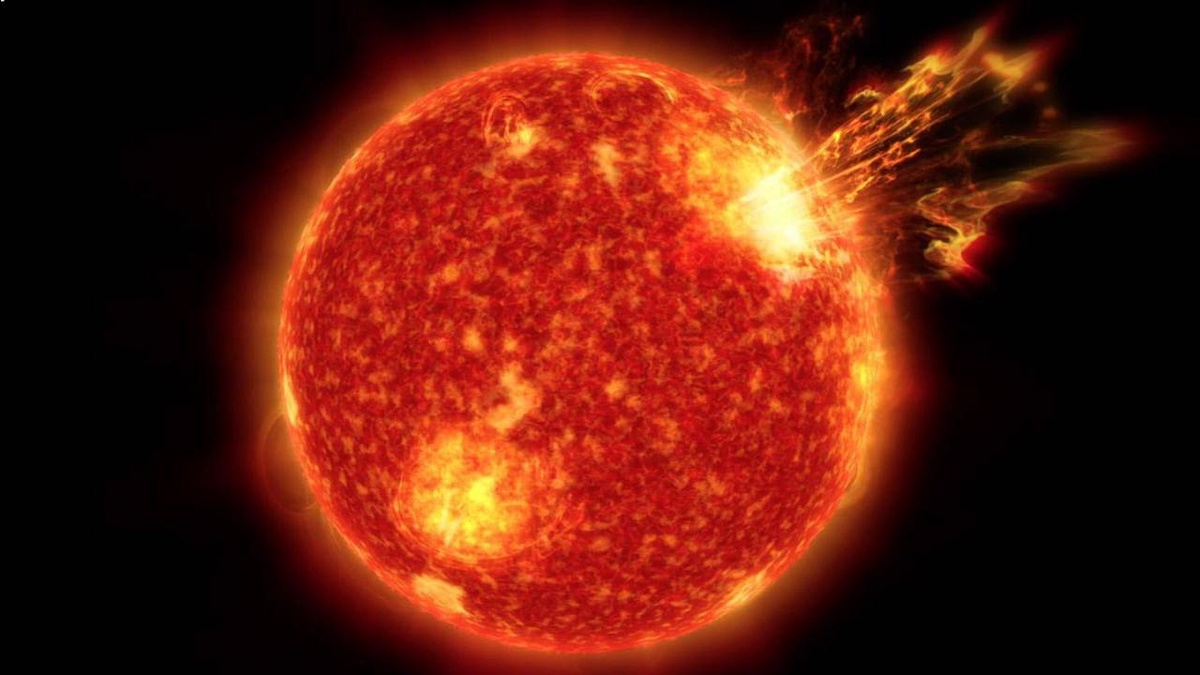November 13th, 2025
In a discovery that reshapes our understanding of stellar activity and its potential impact on alien worlds, an international team of astronomers announced on November 13th, 2025, the first confirmed detection of a coronal mass ejection (CME) erupting from a star other than our Sun. The monumental observation, which occurred on October 8th, 2024, at approximately 14:30 UTC, was not witnessed in real-time but was painstakingly extracted from archival data gathered by NASA’s Chandra X-ray Observatory. The recipient of this violent stellar outburst was HR 9024, a active, Sun-like star located roughly 450 light-years away in the constellation Andromeda. This breakthrough ends a decades-long search and opens a new frontier in astrophysics, allowing scientists to directly study the most powerful eruptions in the cosmos beyond our solar system and assess their role in the habitability of exoplanets.
For years, astronomers have inferred the presence of stellar flares and CMEs on distant stars, but directly observing a CME had remained frustratingly elusive. While flares—intense bursts of radiation—are readily detectable across vast distances, a CME is a slower, more massive event involving the ejection of billions of tons of superheated plasma and embedded magnetic fields from a star’s corona. The key to the discovery was the detection of highly specific signatures in the star’s X-ray spectrum. As the team, led by Dr. Costanza Argiroffi of the University of Palermo in Italy, analyzed old Chandra observations, they noticed something extraordinary: the light from highly ionized iron atoms showed a distinct blue-shift, indicating a massive quantity of material was moving away from the star’s surface at tremendous speed. This was immediately followed by a dimming in the star’s X-ray brightness, a tell-tale sign of material having been expelled, leaving a temporary void. This combination of a blue-shifted spectrum and a subsequent X-ray dimming provided the smoking gun evidence for a coronal mass ejection. Dr. Argiroffi stated, “We have seen stellar flares for decades, but the CME was the missing piece. To finally capture one, by seeing the material itself move outward and then confirm its ejection through the dimming, is a feeling of immense triumph. It confirms that the physical processes we see on our Sun are indeed universal.”
The sheer scale of the event is staggering, even for seasoned astronomers. The observed CME from HR 9024 was calculated to have a mass of approximately 2.2 billion billion pounds (or 1.0 billion billion kilograms), which is about 10,000 times more massive than the largest CMEs ever recorded from our Sun. Furthermore, the plasma was erupting at a speed of nearly 1.5 million miles per hour. This confirms theoretical models suggesting that CMEs from young, magnetically active stars could be far more energetic and massive than those from our middle-aged Sun. The implications of this are profound, especially in the context of the search for habitable worlds. Planets orbiting within the habitable zone of such active stars would be subjected to a relentless barrage of high-energy radiation and particles. A CME of this magnitude striking an Earth-like planet would likely strip away its atmosphere over time and bathe its surface in lethal radiation, effectively sterilizing it. Dr. Rachel Osten, an astronomer at the Space Telescope Science Institute who was not directly involved in the study, commented, “This isn’t just about stellar physics; it’s a direct window into planetary evolution. We’ve been wondering for years why some otherwise promising exoplanet systems seem to have no atmospheres. This observation provides a likely culprit: these monster CMEs can act as planetary sandblasters, eroding away any chance for a stable, life-supporting environment.”
The methodology behind the discovery is as significant as the discovery itself. The team utilized a technique called X-ray spectroscopy, which analyzes the intensity of light at different wavelengths to determine the composition, temperature, density, and velocity of the emitting material. The success of this technique proves that existing X-ray observatories, particularly Chandra, are capable of performing this kind of detailed forensic astronomy. It paves the way for systematic surveys of other stars to determine the frequency and power of their CMEs. Scientists can now begin to categorize stars not just by their size and temperature, but by their level of eruptive activity, a critical factor in assessing the true habitability of the thousands of exoplanets discovered orbiting them.
Looking ahead, this discovery galvanizes the case for next-generation X-ray space telescopes. While Chandra proved capable of this historic detection, future missions designed with higher-resolution spectrometers could detect smaller CMEs from a wider variety of stars, building a statistical understanding of stellar storms across the galaxy. This new ability to directly study stellar CMEs transforms them from theoretical threats into measurable environmental factors. As we continue to identify Earth-sized planets in habitable zones, understanding the temper of their host star becomes paramount. The detection of the first stellar CME marks the moment we moved from simply finding planets to truly understanding the dynamic and often violent stellar environments in which they must survive. It is a humbling reminder that a stable, relatively quiet star like our Sun may be a rarer and more precious component for life than we ever imagined. As the study’s co-author, Dr. Jeremy Drake of the Harvard-Smithsonian Center for Astrophysics, put it, “This is the end of the beginning. We’ve proven it can be done. Now, we have to find more. We need to know how often these stars have these tantrums, and what that really means for the planets huddled around them. Our definition of a ‘habitable zone’ just got a lot more complicated.”




